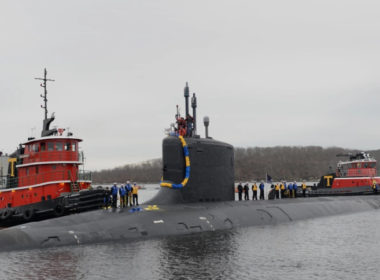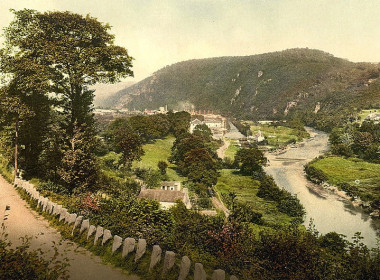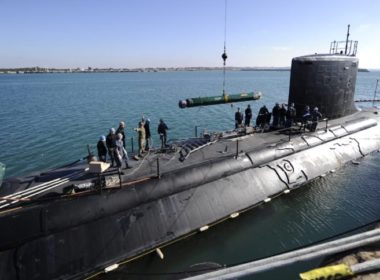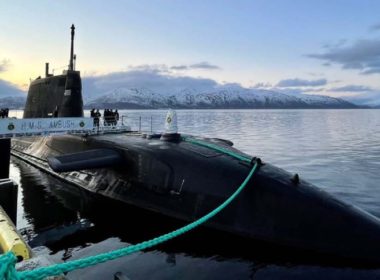OPINION | To control our destiny, we must learn from our past for the AUKUS SSN

I have previously argued for Australia to take an active role in the design and procurement process for the nuclear-powered, conventionally armed submarine (SSN) to be acquired under the AUKUS agreement with the US and UK.
That is essential to ensure an Australian based, reliable and sovereign supply chain, able to sustain our own submarine capability.
Construction costs are not trivial, but sustainment will be in the order of 70 per cent of the costs of ownership—about $260 billion of the estimated $368 billion total cost. With an Australian based supply chain, the through life support costs would be significantly less, and much of the money saved can be directed to Australian industry and its society.
We must learn from the past.
In the 1960s, the Oberon-class submarines were acquired off-the-shelf from the UK and relied extensively on a British-based supply chain. During the Falklands war in 1982, our paid-for spares were diverted to support the Royal Navy’s submarines. Australia was forced to tie up and cannibalise its own submarines to keep a limited number at sea. The loss of sea days caused a crewing crisis that took years to recover from.
We did far better with the Collins-class. The Oberons had suffered from extremely high maintenance costs and it was expected for Collins that an Australian construction program and a high local content would significantly reduce these costs.
We resisted the advice to build the first of class overseas, but compromised by opting to build the two more complex sections in Sweden to speed up the delivery of the first submarine. This was a mistake. The weld standards achieved in Adelaide were world class but the Swedish sections both contained major welding defects requiring many hours and costing millions of dollars to repair at the submarine’s first refit.
A parallel project, building the ANZAC-class frigates, was very successful both financially and in build quality. This was mostly due to the engineering strategy that involved an Australian-owned shipbuilder, embedding Australian engineers in the overseas design office and repatriating the design office to Australia at the build yard for the detailed design phase, designing the frigates to Australian standards and codes from the outset to ensure an efficient build and later sustainment program and, most importantly, a requirement for a minimum of 70 per cent of the contract value to be spent on Australian industry.
The much-maligned Collins program followed exactly the same recipe. The detail design was undertaken in Australia, at the ASC assembly yard, under supervision of the Swedish firm, Kockums. It incorporated Australian standards, definitions and codes so that work instructions and technical procurement specifications could be dealt with by an Australian supply chain, industry and workforce. Where no Australian standard existed, the Swedish ones were the default.
The program was a success by global standards. Initial delivery was nine years after contract signature, from a yard built on a greenfield site.
The goal of 70 per cent local content in Collins was achieved.
“The build standard in Collins achieved by an Australian shipyard was world class, for weld quality and hull circularity.”
The Kokoda Papers report, Sub Judice: Australia’s Future Submarine, published in January 2012 found the sail-away cost of the Collins submarines was just below international average on a cost/tonne basis. Maintenance costs are half of the Oberon-class using the global benchmark of annual expenditure as a percentage of Replacement Asset Value (RAV). Today, over 90 per cent of the cost of sustaining these submarines is spent in Australia—because we insisted on the Australian build with high local content engineered-in during the design for the 1st of class.
Prior to the disruption of Covid, Australia was achieving world class submarine availability. We have demonstrated that we know how to do this on both Collins submarines and ANZAC frigates. Let’s build on that.
If the recipes for the Collins and ANZAC ship projects are followed, and they were good, solid engineering recipes, then the AUKUS submarines would be constructed in Adelaide by an Australian-owned shipbuilder. Also, if the contract requires a minimum of 70 per cent of the contract value to be spent with Australian industry, then that will set Australian industry on course to be involved heavily with the AUKUS submarine sustainment program. 90 per cent should be our benchmark for the AUKUS submarine sustainment program.
There are two lessons to draw for the future from these experiences. The first is not to condemn the partnership with the UK or USA, but to observe that, when push comes to shove, nations will react in their own best interests.
The second, that Australia can master the technology as well as anyone; the build standard in Collins achieved by an Australian shipyard was world class, for weld quality and hull circularity; both critical yardsticks of submarine hull construction.
Australia is planning on a force of eight SSNs. I have argued that we need at least 12. As the second-hand and newbuild Virginia-class SSNs we intend to acquire are retired, 15 or 33 years respectively after we acquire them, they’ll be replaced by additional SSN AUKUS, making us an equal partner with the UK, which is currently building a force of seven Astute-class SSNs.
The design for the new submarine is underway and offers an opportunity for Australian industry to be involved from the beginning of the program.
It won’t be easy to take this path. The first AUKUS SSN is planned to be built in the UK for the Royal Navy; the temptation for Australia to subsequently utilise a UK-based supply chain for its submarines must be resisted and legislated against in the contract. This makes sense economically and from a sovereignty perspective, as I have argued above.
It would also be prudent planning, since it is quite likely that the UK build will be delayed; the first Australian build may well occur in parallel or ahead of the UK’s build.
“We are now at the only point in this program where Australia’s government has leverage.”
I have argued that the baseline design for SSN AUKUS should be shifted to the Virginia-class design. The US plans to commence building its Block VII Virginia in 2029 and this timing would seem a good fit for the an SSN AUKUS (V). Most importantly in this context, a Virginia baseline would avoid the need to sustain two different classes of SSN, each with its own supply chain.
Regardless of the baseline chosen, the supply chains and shipyards of both the USA and UK are currently hard-pressed to meet their own needs. Australia has facilities and capabilities that can manufacture submarine parts for both our partners. If we do that, we can upskill and grow our knowledge before we start to build our own boats.
It would also be a sensible and positive way of climbing the learning curve, while bringing a very valuable contribution to our new partnership. Some Australian-owned companies have facilities in USA and UK that can also enter their SSN supply chains.
It’s intended to select the Australian shipbuilder this year. This adds additional urgency to the selection of the baseline for the design. A UK-centric industrial arrangement would make little sense for a Virginia baselined SSN AUKUS (V).
Regardless of the baseline, Australia should follow the successful Collins and Anzac project model and select a majority owned, Australian company to build our submarines.
The Australian submarine builder, ASC, and its existing supply chain of over 1,200 companies provides the best starting point. We should build from a privatised ASC, incorporating the leading engineering and project management skills available in Australian industry and a minority shareholder with a successful record of building SSNs (and an American accent!). We should not seek to develop a separate Australian, or worse, foreign-owned entity which will compete with ASC for the valuable and limited manpower resources available to sustain Collins and deliver SSN AUKUS.
Delivering a sovereign Australian supply chain, able to control our own destiny, including in a crisis, maximising spending and jobs in Australia and contributing to the AUKUS partnership will require proactive, strategic direction from the Australian Government in establishing an effective industrial program. That process is now urgent.
It’s critical for our citizens to understand that we are now at the only point in this program where Australia’s government has leverage. That leverage must be used constructively to build our own future, and to fully pull our weight.







